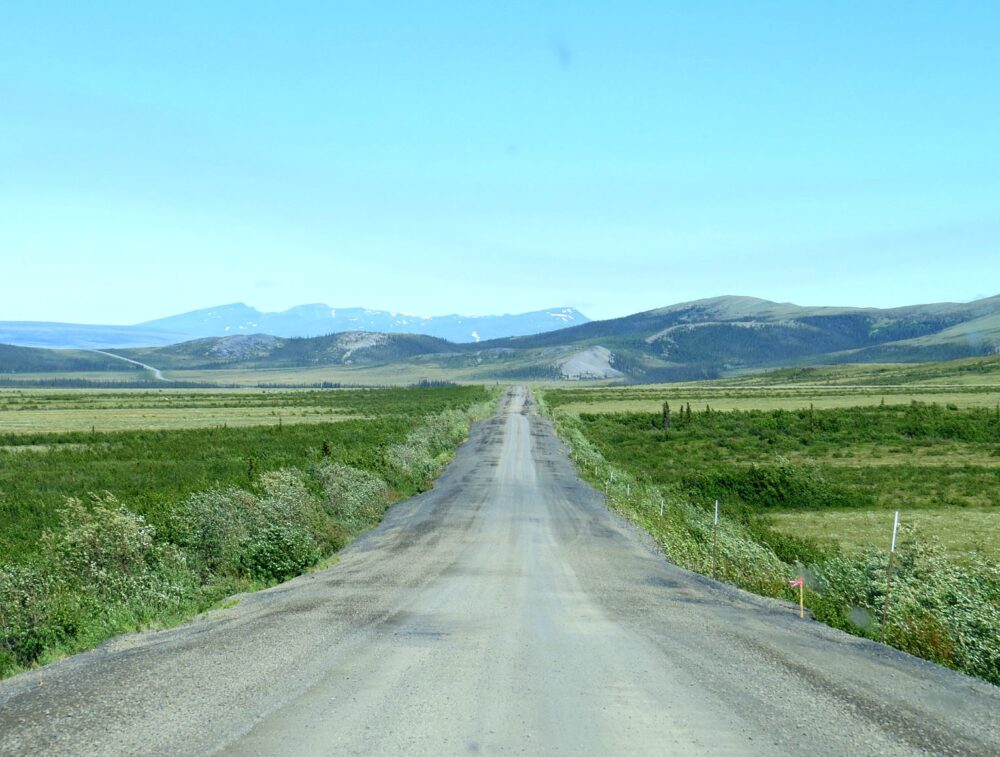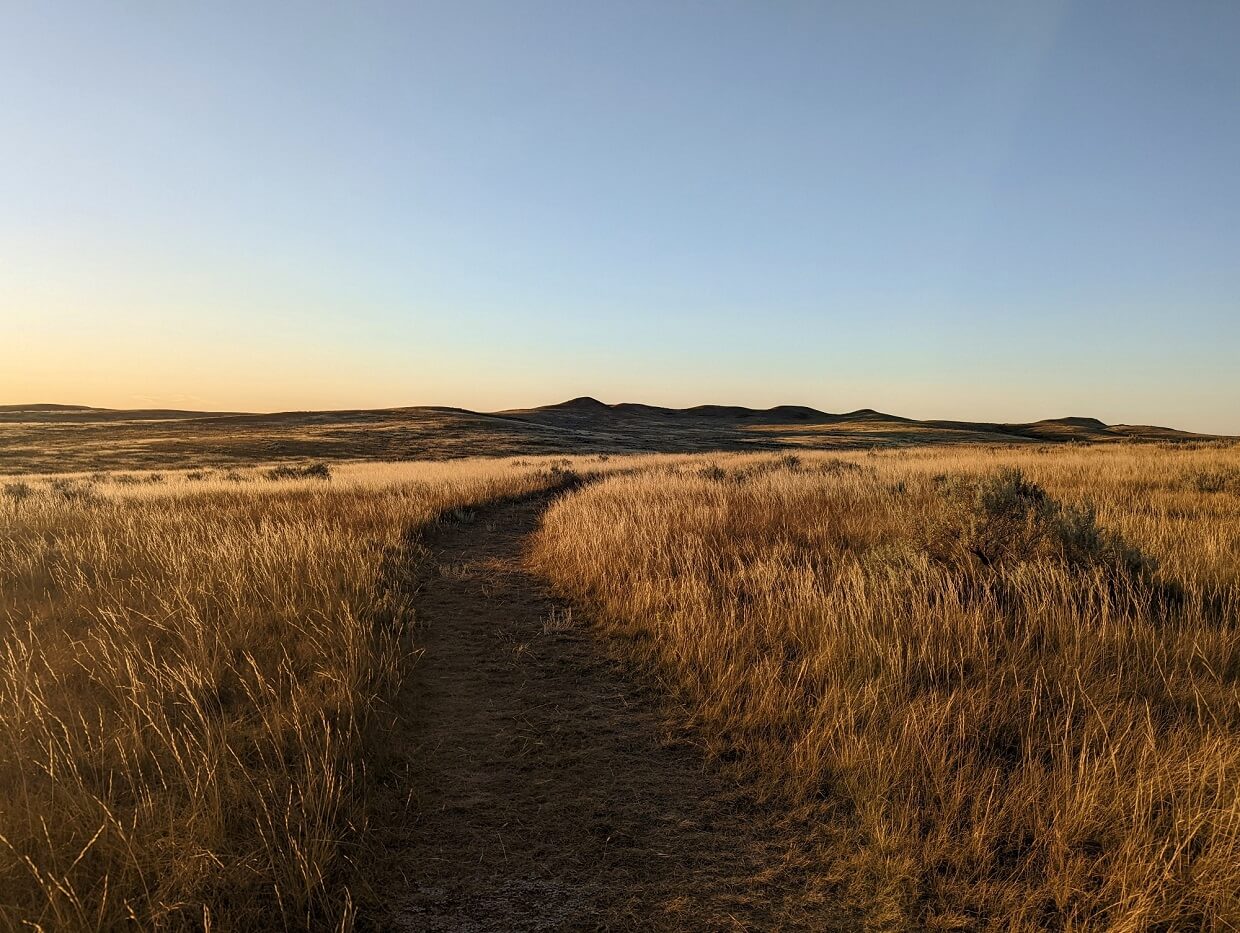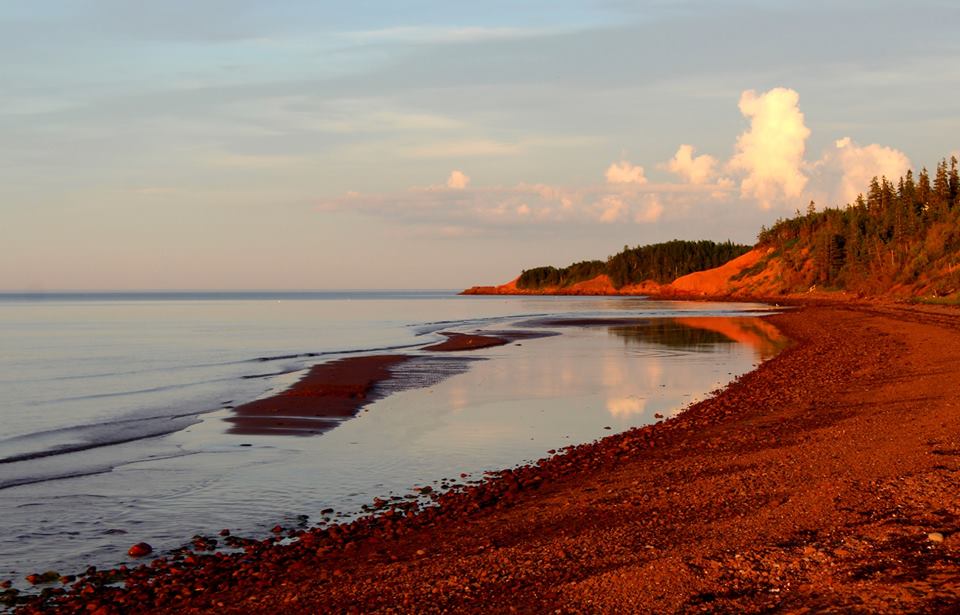Want to explore Canada this year but not sure where yet? This post shares ideas for beautiful places to visit across this incredible country, from coast to coast to coast.
As full time Canadian travel bloggers living in British Columbia, we are fortunate to have travelled all 10 provinces and most (2 out of 3) territories.

Moreover, we have been able to explore certain regions extensively, spending months in areas that most travellers would only pass through in a few days. And, of course, in the case of BC, we have years of experience wandering beyond the beaten path.
We love Canada and love helping others plan Canadian vacations, road trips and multi-day outdoor adventures. The following recommendations are all based on our personal travel experiences.
I hope you can use this post as a launching point for your trip planning, whether you’re Canadian and looking for local inspiration or visiting from overseas!

Exploring Canada: Some essential details
Before we get started, I just wanted to let you know some key info about travelling Canada.
- The following recommendations are for Canada’s main travel season, which runs June to September. Of course, it is possible to travel to many of these places outside of this time but some locations are more seasonal and have limited services during the cooler months
- July and August are the busiest months to explore Canada, so if you are able to visit in June or September, I’d suggest doing so
- Choosing between June or September? It totally depends on the location, but September is usually my preference (less snow in mountainous regions, less mosquitoes in buggy areas, more reliable weather)
- If you’re visiting from overseas, please be aware that Canada is a huge country! Concentrate on exploring one province or smaller area unless you have multiple weeks to spare
- In most locations, I would strongly recommend reserving accommodation and a rental vehicle ahead of time. Some of the most popular activities book out quickly as well

British Columbia
As mentioned, British Columbia is our home province and we’ve explored a good portion of it – from the ocean and temperate rainforest to dry grasslands, mountains and beyond.
Vancouver Island and the Rockies are undoubtedly the most popular destinations and we have plenty of content on both regions. Some lesser known areas include:
- Columbia Valley – The ‘other side’ of the Rockies is warmer and also features wetlands, hot springs, hoodoos and hiking trails. This fall travel guide is relevant for summer trips as well
- South Okanagan Valley: While very popular with locals, the South Okanagan isn’t well known internationally. It looks very different to most of BC – think huge lakes, desert-like hills and lots of vineyards. And temperatures are super hot in summer! Head to our dedicated Penticton website for more details
- West Kootenays – This tucked away region has several deep lake valleys, with characterful small towns, natural hot springs, incredible provincial parks (Valhalla, Kokanee) and a lot of history. Our Nelson to Revelstoke road trip guide is a good starting point
- North BC – A truly ‘off track’ experience, wherever you go. Loop together the legendary Alaska Highway with the Stewart-Cassiar Highway, with stops in Tumbler Ridge (waterfalls, dinosaur tracks), Liard Hotsprings and the Salmon Glacier (the world’s largest road-accessible glacier)
Need some help to narrow down a trip itinerary for Vancouver Island or Southern BC? Our interactive map guides completely simplify the planning process. We offer personalised itineraries too, tailor-made for your interests, trip length and travel style.

Yukon
My top destination for anyone wanting to experience raw Canadian wilderness? My answer will always be Yukon. This extraordinary territory sits between BC and Alaska and is home to only 46,000 people.
Most of the local residents live in the capital city, Whitehorse, which leaves a whole lot of true wilderness (474,391 km2 to be exact!)
The landscape is surprisingly varied, with rugged mountains, rolling tundra, mighty rivers, boreal forests, azure lakes and more.
In some places, the landscape just seems to go on forever. And the daylight hours do as well – in June and July, most areas of the Yukon receive around 21 hours of sun.
For a short trip (4-6 days), combine Whitehorse with the super fun and surprisingly lively Gold Rush town of Dawson City.
If you can, however, I’d suggest a two/three week road trip to also include Kluane National Park, Carcross and Tombstone Territorial Park.
The latter is on the unpaved Dempster Highway, which leads to the Arctic and the Northwest Territories (more details below). Driving it was one of my most memorable experiences in Canada!

Northwest Territories
If the untamed beauty of the Yukon sounds appealing, consider combining a trip with the Northwest Territories. This neighbouring territory is just as remote and spectacular, with a similar population total yet even bigger land size!
Most residents live in Yellowknife, which is a popular destination for watching the aurora borealis (northern lights) in winter. Tours often include a chance to learn about the Dene, Métis, Inuvialuit, and Gwich’in people that have lived here for thousands of years.
As in the Yukon, traditional ways of life, such as hunting, trapping, fishing, and storytelling, remain particularly strong in the local Indigenous communities.
A common way to access the Northwest Territories is via the Dempster Highway. This rugged unpaved route starts near Dawson City (Yukon) and leads 740km north to Tuktoyaktuk on the Arctic Ocean.
Above the Arctic Circle, there is 24 hours of daylight in the summer months – this is truly the land of the midnight sun. It is definitely something experience at least once (we lasted only six days!)

Alberta
The mountainous areas of Alberta are very well known (Banff, Jasper, Lake Louise et al) but this western province has more to offer.
Something I really love about this province is just how many interesting places there are within just a few hours drive of Calgary.
Besides the Rockies, my favourite day trip/overnight destinations from Calgary are:
- Drumheller – Host to one of the best dinosaur museums in the world, set in dramatic dry badlands scenery (hoodoos, coulees and more)
- Lacombe – Characterful small city with historical downtown, unique local restaurants, nearby nature centre, hiking/biking opportunities (read our full guide)
- Dinosaur Provincial Park – UNESCO World Heritage Site with dinosaur bones, fossils and hoodoos in a more remote setting
- Waterton National Park – Underrated national park with interesting and well maintained hiking trails, largefront village, bison paddock and more
Other spots we have enjoyed include Vulcan (yes, the same as in Star Trek), Writing-on-Stone (amazing rock art and hoodoos) and Sundre (small town with lots of outdoor adventure opportunities).
Calgary itself has a wealth of things to do – a few years ago I made a list of my favourite adult-orientated activities to check out.

Saskatchewan
Saskatchewan is not as flat as they say. Drive in any direction away from Highway 1 and you’ll soon discover a landscape far more varied than its reputation suggests.
And don’t forget to look up – Saskatchewan is known for spectacular big skies, both during the day and night.
Grasslands National Park is my top pick. Less than 20k people visit every year, which makes it one of Canada’s quietest national parks (and one of my favourites!)
The park is split into two sections, about 2 hours drive apart. Each has a distinct personality. The West Block showcases rolling fields of grasses, eroded river valleys and steep canyons. Its best known for wildlife – bison, prairie dogs, pronghorns, badgers and more.
The East Block is all about dramatic badlands scenery, with hoodoos, buttes and a whole lot of dinosaur bones. It’s one of the richest fossil sites on the continent. We actually had the chance to dig up 66 million year old dinosaur bones from the ground.

Manitoba
Although I’m not much of a city person, I’m surprisingly drawn to Manitoba‘s capital city, Winnipeg.
Located far from any other large city, Winnipeg sits at the confluence of the Red and Assiniboine Rivers. This important meeting place (‘the Forks’) has been a hub for Indigenous people since time immemorial.
Despite its size, Winnipeg is still approachable. It’s a great destination for anyone into culture, history and food. A must visit is the Canadian Museum for Human Rights, the first of its kind anywhere in the world.
For outdoor experiences in Manitoba, a good starting point is Riding Mountain National Park or Whiteshell Provincial Park. Both are on our list for our next visit!

Ontario
Oh, Ontario! While I’ve visited a few times now, it still feels like I’ve barely made a dent in this huge province filled with dense forest, thousands of tiny lakes, granite cliffs, historic waterways and rolling farmland.
Toronto, Niagara Falls, Algonquin Provincial Park and Ottawa are the big hitters (and deservedly so), with other local favourites including the Bruce Peninsula, Muskoka and the Thousand Islands.
Ontario is Canada’s most populated province but there is still plenty of space and wilderness to be found, especially if you’re willing to embrace the outdoors.
One example is Quetico Provincial Park, a legendary northern canoe paddling destination with more than 2000 lakes over 1.2 million acres (almost the size of Prince Edward Island!) We spent a week exploring Quetico and felt truly alone in the wilderness.
For a less rugged getaway within reasonably easy reach of Toronto, consider a trip to the lakefront city of North Bay.

Quebec
Quebec is Canada’s largest province and also the only one with French as the sole official language. Needless to say, it feels quite different to anywhere else! We love Quebec’s emphasis on protected outdoor spaces and local food (the cheese scene is particularly incredible)
Montreal and Quebec City are always wonderful to visit. And yes, the latter does really feel a lot like Europe! My suggestion, however, would be to head towards the coast.
The Gaspé Peninsula is the perfect place for a road trip, with expansive ocean views, lighthouses, small towns and coastal national parks to explore. Venture into the interior to get a taste of the mountains as well, in Parc national de la Gaspésie (my perfect combination!)
For an even bigger adventure, head to the Magdalen Islands (Canada’s best kept secret). Situated in the middle of the Gulf of St Lawrence, this group of tiny islands is connected by sand dunes and fringed by crimson cliffs.
Take a ferry from PEI to experience rich Acadian culture, an amazing culinary scene and all the outdoor activities you could imagine!

New Brunswick
New Brunswick has an unfairly deserved reputation as Canada’s ‘drive through’ province. There’s plenty to see and do here though a little more effort is required for exploring beyond the most popular spots (Hopewell Rocks, Fundy National Park).
Personally, I don’t think enough visitors head to New Brunswick’s northeast. The Acadian Peninsula, for example, presents a completely unique side to this often overlooked province.
As well as being beautiful (ocean views, lighthouses, beaches, small coastal communities), the Peninsula also offers a chance to become immersed in Acadian culture and French language.
JR hails from the small town of Shippagan, an ideal place to be based to explore the Acadian Peninsula. If you’re into cycling, be sure to bring your bike – the local network stretches more than 600km, with many long paved sections.

Prince Edward Island
Prince Edward Island (PEI) is Canada’s smallest and least populated province but punches well above its weight when it comes to travel destinations. With more than 800km of coastline, it is best known for idyllic beach holidays.
And what spectacular beaches they are! The sand ranges from tropical island white (with a squeaking sound underfoot!) to vibrant rosy red in colour. There are rugged cliffs too, as well as sand dunes, lighthouses and rockpools.
Beyond the amazing beaches, PEI is best known for Anne of Green Gables, lobster rolls, easy cycling /hiking routes, Cows Creamery, historical Charlottetown and, of course, potatoes. If you can, visit out of the busy season (July, August).

Nova Scotia
Nova Scotia is a province I happily return to time and time again. While it may look on the small side on maps, Nova Scotia boasts over 13,000 km of coastline, along with mountain plateaus, lush valleys, and more than 3,000 lakes.
Beyond the beautiful views, you’ll also experience authentic small town charm, meet friendly locals and eat plenty of fresh, locally produced food (including lobster!)
Nova Scotia is also home to the world’s highest tides (shared with New Brunswick), 12 whale species, 4 UNESCO Heritage Sites, 2 UNESCO Biospheres, 2 National Parks, 13 National Historic Sites and 1 Dark Sky Preserve. There is a lot to love here.
Halifax, Peggy’s Cove, Lunenburg and Cape Breton Island are the highlights for many summer travellers.
I’d suggest going further, to the bountiful Annapolis Valley, French speaking Baie Sainte-Marie, scenic Cape George drive, expansive Kejimkujik National Park and the trails of Cape Chignecto. Head to our Nova Scotia road trip guide for more ideas.

Newfoundland
The last province to join Canada, Newfoundland has a very distinct identity. Its island landscape is strikingly unique as well, having been shaped by glaciers, coastal erosion and ancient continental formation over thousands of years.
Think steep coastal cliffs, basalt columns, tundra-like barrens, rolling hills, dramatic headlands and exposed rock. One example of the latter is found in Gros Morne National Park, where the Earth’s orange coloured mantle is exposed (usually buried deep below the crust).
It would be easy to spend two or three weeks exploring Newfoundland’s friendly (and colourful!) coastal communities, expansive national parks and beautiful coastal hiking trails.
Shorter, more focused trips are possible too. We recently spent a few weeks on the Avalon Peninsula, exploring the city of St John’s and hiking the East Coast Trail.
We spotted whales from shore, hiked to Canada’s most easterly point, watched waterfalls fall into the ocean, ate super fresh seafood and danced to live Celtic music. No matter where you go in Newfoundland, you’ll make unforgettable memories.

Nunavut
Located in the Arctic, Nunavut encompasses more than one fifth of Canada’s total landmass.
Full disclosure here, neither of us have ever been to this northern territory. It’s the last one we need to visit! Imagine endless rolling tundra, icebergs and snowmobiles/ATVs as a primary form of transport.
If you are interested or have the opportunity to go that far north, spend at least a few days in the capital city of Iqaluit. Travel tips and suggestions for things to do are featured in this Iqaluit guide written by a two time visitor.
More Canadian travel inspiration
Toronto to Vancouver Road Trip: 24+ Great Places to Stop
British Columbia Trip Planning: Essential Travel Tips to Know
17+ of the Best Day Hikes in British Columbia, Canada
Ultimate 2 Week Western Canada Road Trip from Vancouver
Highway 17 Road Trip: 10 of the Best Ontario Parks
Complete Two Week Coastal Quebec Road Trip Itinerary
Vancouver Island Road Trips: Off the Beaten Path Ideas, Maps + Essential Info
Where to Find Big Trees on Vancouver Island, British Columbia
Check out these recently published posts:

One half of the Canadian/British couple behind Off Track Travel, Gemma is happiest when hiking on the trail or planning the next big travel adventure. JR and Gemma are currently based in the beautiful Okanagan Valley, British Columbia, Canada. Consider buying us a coffee if you have find any of our guides helpful!

![How to Visit Lake O’Hara Without a Reservation [Road Walk, Return Bus, Cancellations]](https://offtracktravel.ca/wp-content/uploads/2025/06/header-lake-ohara-without-a-reservation-400x500.jpg)

